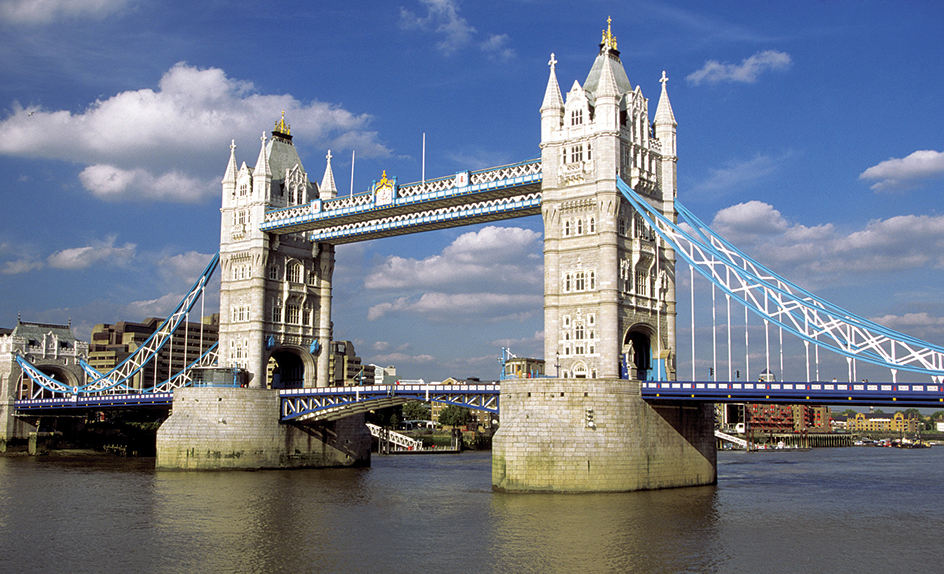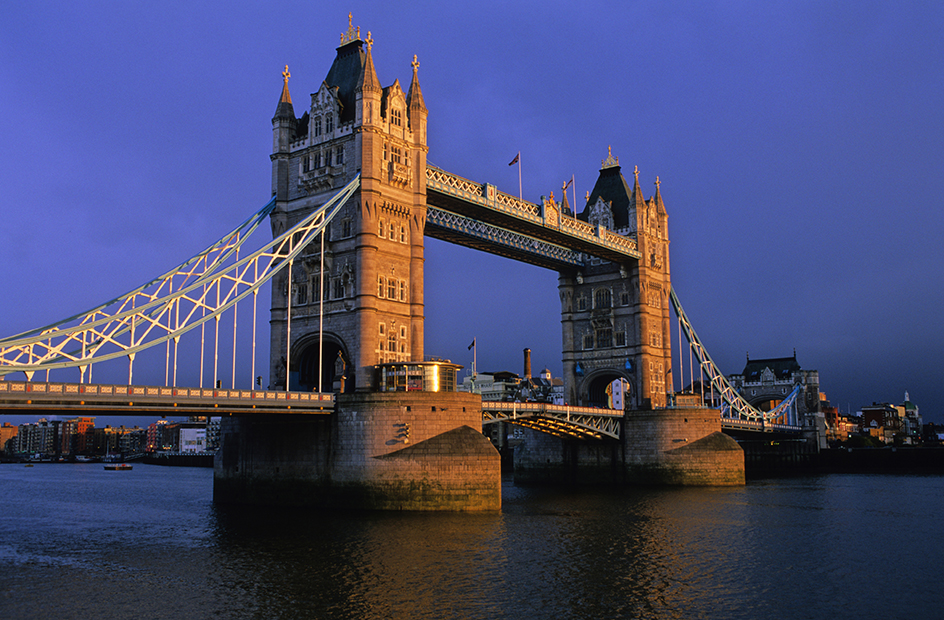Tower Bridge, in London , though not particularly long, is a landmark recognized in part for its unique mixed design. Tower Bridge combines the design of a suspension bridge and a bascule bridge. Suspension bridges generally hang from cables. A bascule bridge can tilt upward, much like a seesaw, so that water traffic can pass underneath. Tower Bridge opened in 1894. It crosses the River Thames .

The central bridge’s span acts as a double-leaf bascule bridge. It splits open at the center, and each leaf (side) swings upward. A counterweight balances each leaf. The span stretches 200 feet (60 meters). Large towers rise on either end of the bascule span. Originally, an elevated walkway between the two towers provided passage for pedestrians while the bridge was raised. Pedestrians could reach the walkway by climbing staircases within the towers. The walkway closed in 1910 but still serves as a museum.
Two suspension-style spans surround the bascule part of the bridge. These spans are each 270 feet (83 meters) long. Unlike typical suspension bridges, which hang from cables, the spans on Tower Bridge hang from semirigid steel trusses. Like cables, these trusses are held in tension and so must be anchored at each end of the bridge. Nothing between the two large towers anchors the trusses. Instead, the elevated walkways between the towers serve as struts that counteract the tension of the suspension spans on either side.

